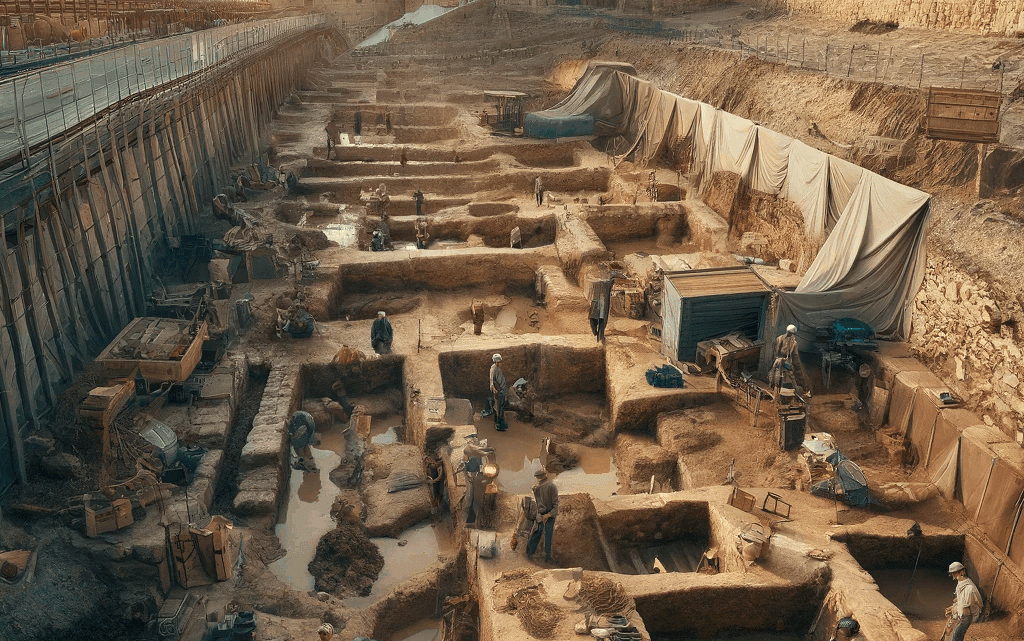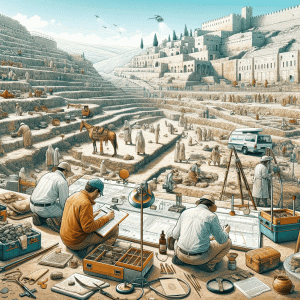Unearthing Biblical Truths: New Archaeological Discoveries


Introduction
Archaeology has long been a powerful tool in affirming the historical accuracy of the Bible. Recent discoveries continue to shed light on the ancient world described in the Scriptures, providing compelling evidence of biblical events and figures. This post explores some of the most significant archaeological findings of recent years and their implications for our understanding of the Bible.
1. King David’s Jerusalem
In 2023, archaeologists made a stunning discovery that further solidifies the biblical narrative of King David’s reign. During excavations in Jerusalem, a giant moat was uncovered, dating back to the time of David. This defensive fortification aligns with the biblical accounts of Jerusalem’s significance and its fortifications under David’s rule (2 Samuel 5:9). Imagine walking through ancient Jerusalem and stumbling upon the very defenses that once protected one of the Bible’s most iconic kings! You can read more about this discovery on Faithwire.
2. The City of David and Radiocarbon Dating
In a breakthrough study, radiocarbon dating was applied to seeds and other remains from Jerusalem’s ancient City of David. This technique revealed new evidence of the city’s settlement between the 12th and 10th centuries B.C. and its expansion in the 9th century B.C. What’s truly fascinating is the confirmation of a mid-8th century B.C. earthquake, followed by a period of reconstruction, mentioned in Amos 1:1 and Zechariah 14:5. It’s like piecing together an ancient puzzle that perfectly fits the biblical timeline. For more details, check out the report on Live Science.
3. Mt. Ebal Curse Tablet
In May 2023, researchers unveiled the Mt. Ebal curse tablet, an artifact that might be one of the oldest Hebrew texts ever found. Discovered at the site associated with Joshua’s altar (Joshua 8:30-35), this tablet offers invaluable insights into early Israelite religion and language. Picture the excitement of holding a piece of history that directly connects with Joshua’s covenant renewal ceremony on Mt. Ebal. More about this discovery can be found on the Bible Archaeology Report.
4. Archaeomagnetic Dating at Tell es-Safi/Gath
A new archaeomagnetic process has brought clarity to the destruction timeline of Tell es-Safi/Gath, the Philistine city linked to Goliath. This technique confirmed that bricks were burned during the Aramaean king Hazael’s conquest, described in 2 Kings 12:17. The findings echo the dramatic biblical events, like stepping into a time machine and witnessing the city’s fiery fall. Read more on Phys.org.
5. Hittite Cult Center
Archaeologists in Turkey unearthed Zippalanda, a significant Hittite cult center featuring monumental buildings and a grand temple. This discovery sheds light on Hittite religious practices and their interactions with the Israelites, bringing to life the cultural exchanges hinted at in several Old Testament passages. Imagine discovering an ancient city where priests once performed rituals to their storm god, connecting us to a vibrant and dynamic past. For more information, visit the Biblical Archaeology Society.
Conclusion
These archaeological discoveries not only validate the historical context of biblical events but also enrich our understanding of the ancient world. As new technologies and methodologies emerge, we can expect even more revelations that will continue to illuminate the historical and cultural backdrop of the Scriptures.
Stay tuned for more updates on these exciting developments and their significance for biblical studies.
These findings highlight the ongoing intersection of archaeology and biblical scholarship, offering fresh perspectives and confirming the enduring accuracy of the biblical narrative. Imagine the thrill of these discoveries as we uncover more pieces of history that affirm our faith and deepen our understanding of the Bible’s rich tapestry.

